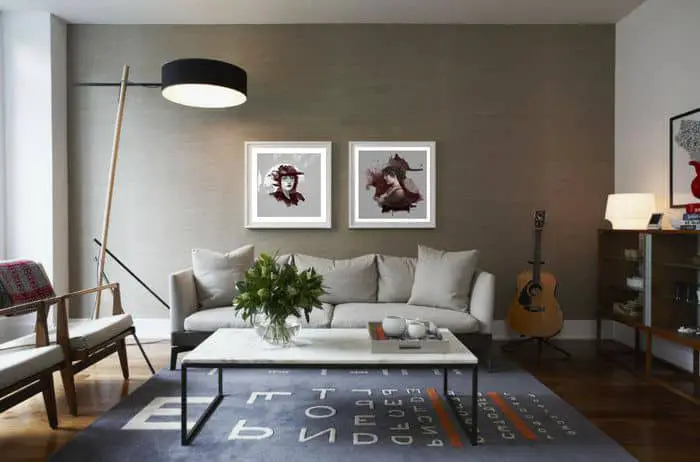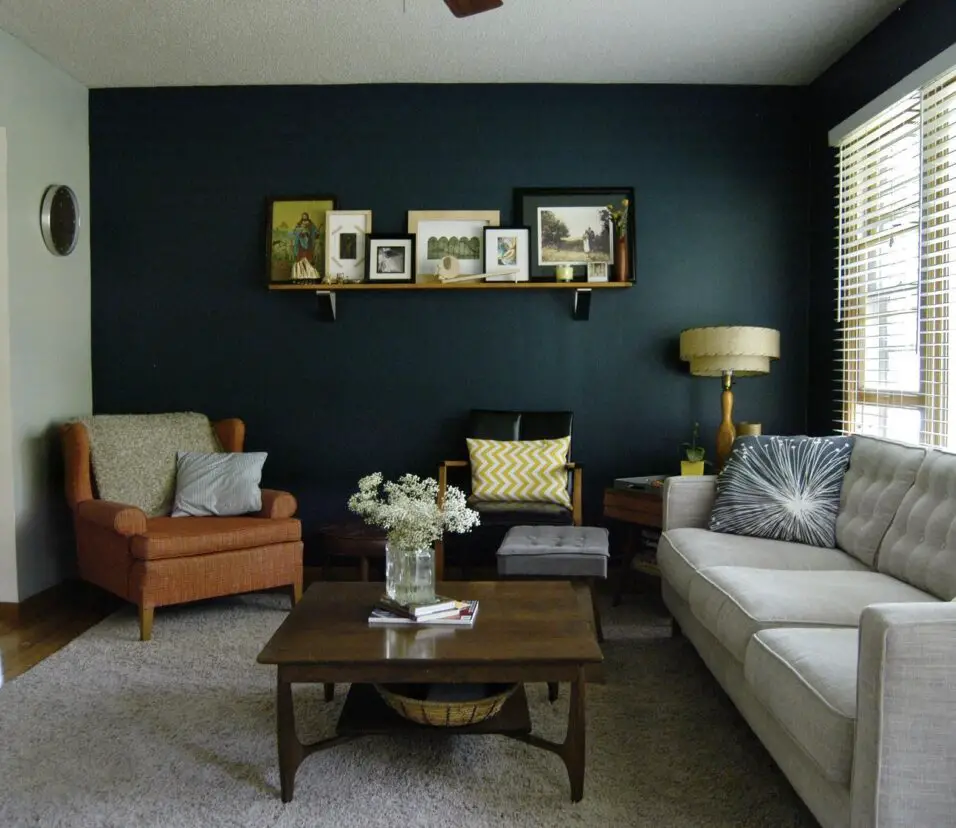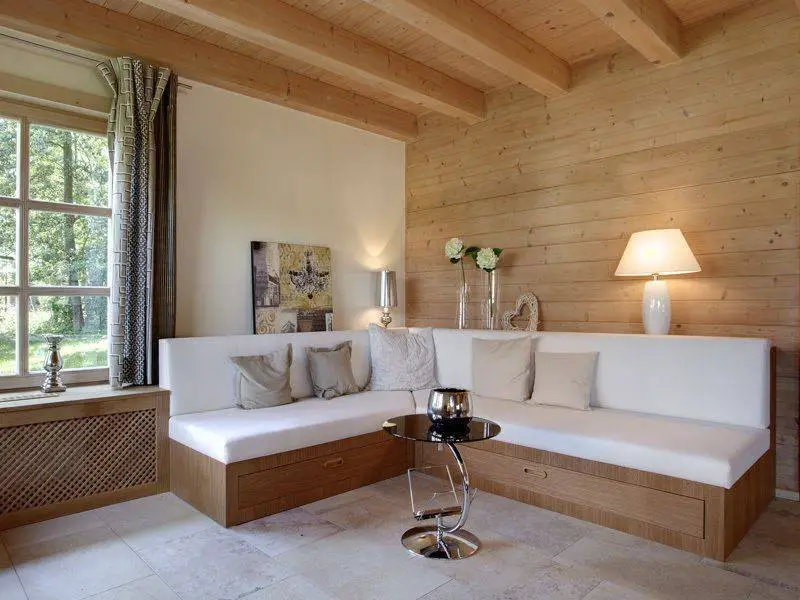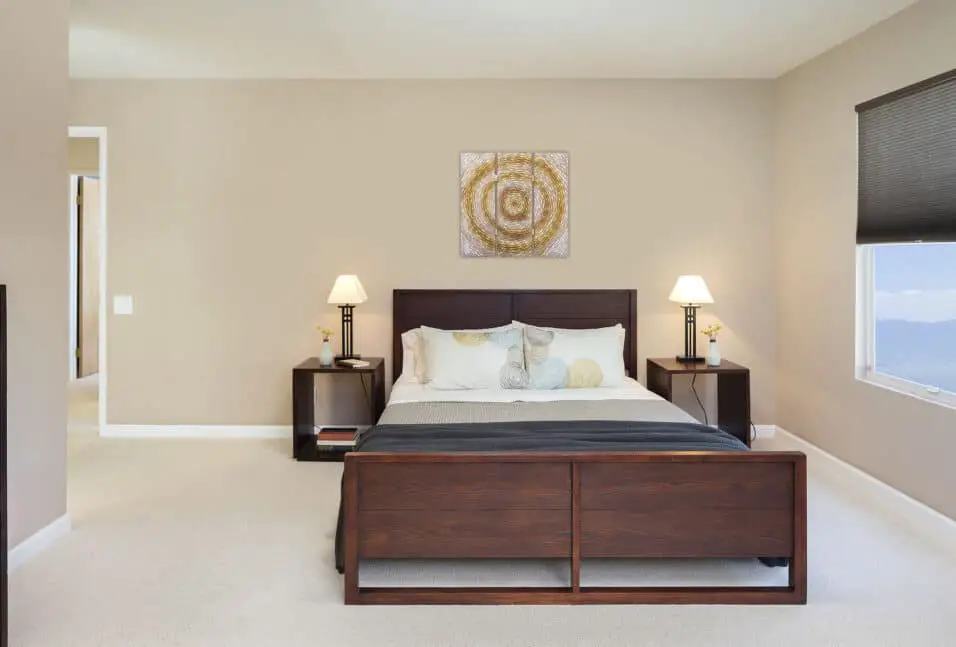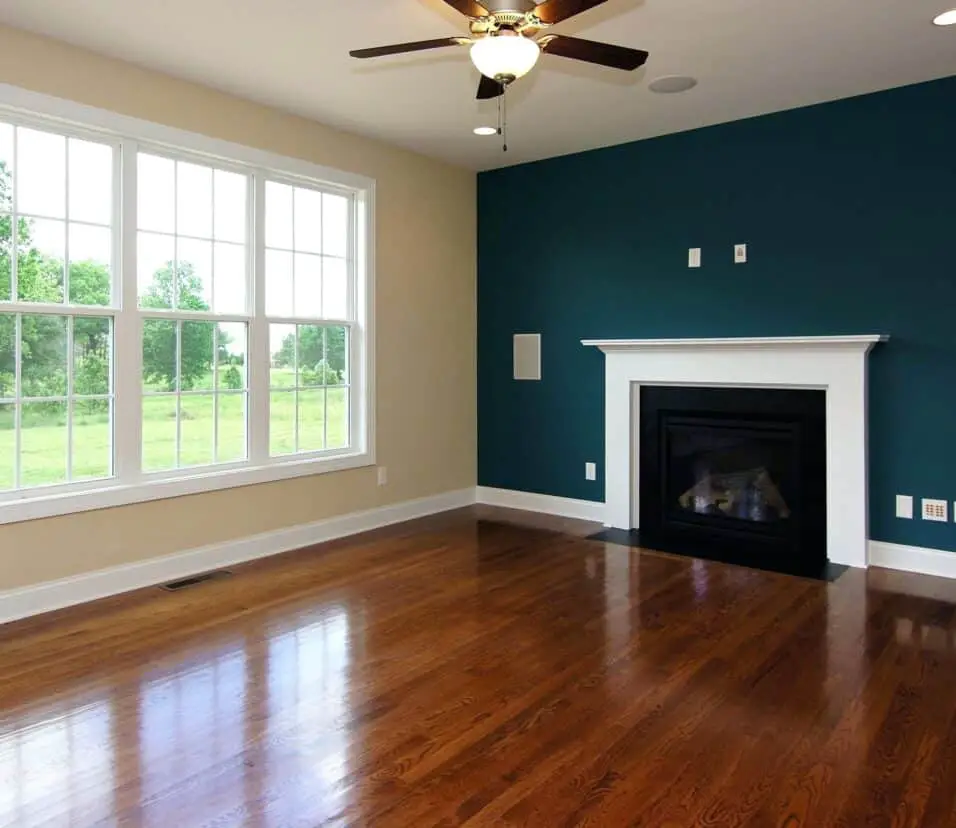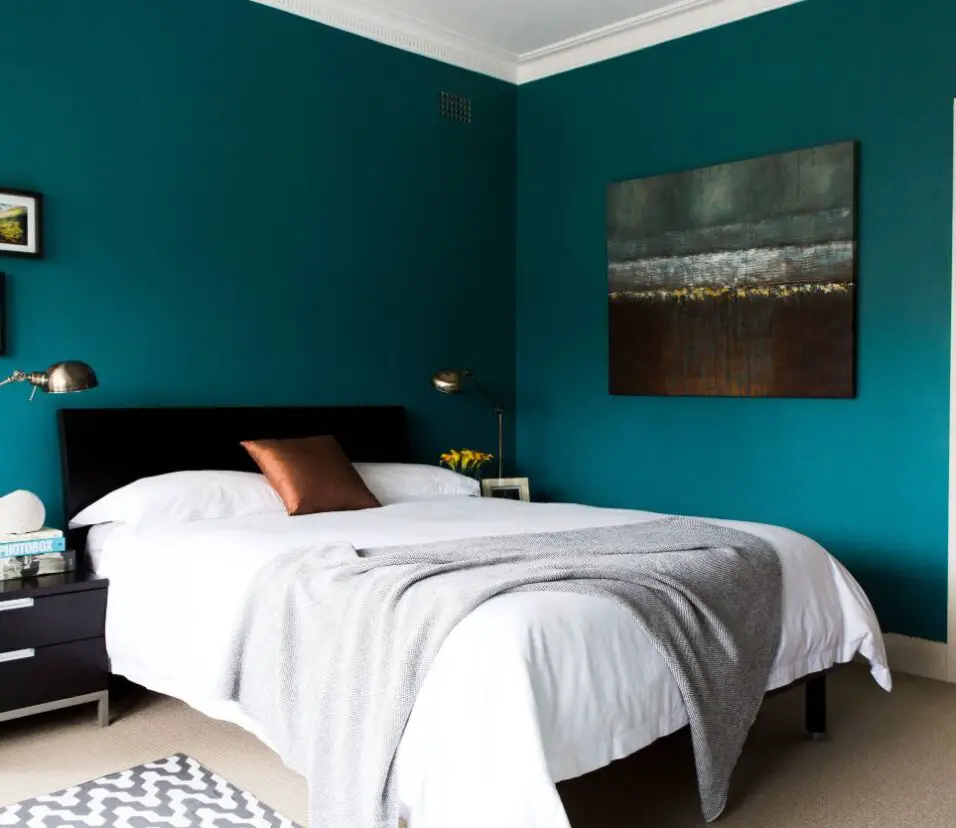Which Walls Should Be Accent Walls
Introduction
Which Walls Should Be Accent Walls: Choosing the ideal walls for accentuation within your living spaces can be a transformative journey in the world of interior design. The decision of which walls to turn into accent walls is a pivotal one, as it can significantly impact the atmosphere, aesthetics, and overall appeal of a room. Accent walls serve as dynamic canvases, enabling you to infuse personality, creativity, and depth into your home decor. In this comprehensive guide, we embark on a quest to unravel the art and science of selecting the perfect walls for accent treatment.
The process of choosing accent walls involves a delicate balance of design principles, personal style, and the unique characteristics of your space. We delve into a range of factors to consider, including room size, layout, color psychology, architectural features, and the mood you wish to evoke. Whether your goal is to make a bold statement, create a sense of coziness, or simply draw attention to a specific area, this guide provides you with expert insights and practical tips to make informed choices.
By the end of this exploration, you will possess the knowledge and confidence to identify the walls that deserve accentuation in your home. With your newfound understanding, you can embark on a creative journey that revitalizes your living spaces, amplifies their visual impact, and adds an exciting dimension to your interior design. So, let’s embark on this illuminating journey to discover which walls should become your accent walls and redefine the aesthetics of your home.
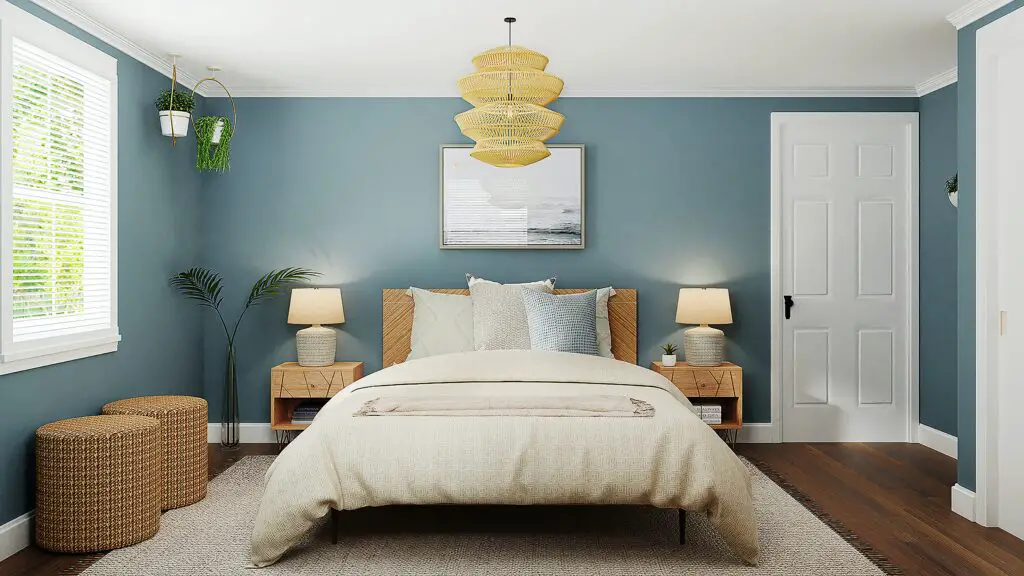
Does it matter which wall is an accent wall?
The first thing you’ll need to consider when deciding which wall should be the accent wall is where your attention naturally falls in the room. If the room has architectural features like a fireplace or built-in bookshelf that naturally draws the eye, you’ll want to strongly consider it as your accent wall.
Yes, it matters which wall you choose as an accent wall, as it can significantly impact the overall look and feel of a room. The selection should be deliberate and strategic. Several factors come into play when deciding which wall to accent:
Focal Point
Ideally, you should choose a wall that naturally draws attention or serves as a focal point in the room. This could be a wall with a fireplace, a piece of artwork, a large window, or architectural features like a niche or alcove. Accentuating such a wall can enhance its prominence and create a visually engaging area.
Balance
Consider the room’s layout and the placement of furniture. The accent wall should balance the space and harmonize with the room’s overall design. Placing it behind a large piece of furniture or in an area where it might get visually overwhelmed may not be as effective.
Architectural Features
Take into account any architectural elements in the room, such as columns, arches, or exposed brick. Accentuating or complementing these features with an accent wall can enhance their appeal.
Lighting
Assess the room’s natural and artificial lighting. An accent wall that receives ample lighting can make colors and textures pop, while a poorly lit wall may not achieve the desired effect.
Color Theory
The color you choose for the accent wall should align with your design goals. Warm colors like red or orange can create coziness, while cool colors like blue or green can convey serenity. Neutral tones can provide a balanced backdrop for other decor elements.
In summary, selecting the right wall as an accent wall does matter, and it should be a thoughtful decision that takes into account the room’s existing elements and your design objectives.
What is the rule for accent walls?
Typically its best to follow the 60-30-10 rule which states that 60% of the room should be the dominant color, 30% should be the secondary color, and 10% should be an accent color. So when choosing a color you’ll want something that’s different from the 60% and 30% colors to make it pop.
While there are no strict rules for creating accent walls, several principles can guide your decision:
Balance
Aim for balance and harmony in the room. The accent wall should enhance the space, not overpower it. Typically, it’s best to choose only one wall as an accent to maintain a sense of equilibrium.
Focal Point
Select a wall that naturally serves as a focal point or one you want to highlight. This could be a wall with a fireplace, a large piece of art, or architectural features.
Color and Contrast
Choose a color or pattern that contrasts with the other walls. This contrast can create visual interest and draw attention to the accent wall.
Room Size
In smaller rooms, it’s advisable to use accent walls sparingly to avoid making the space feel cramped. In larger rooms, you have more flexibility.
Purpose
Consider the purpose of the accent wall. Are you trying to make a bold statement, create coziness, or emphasize a particular area? Your choice of wall and color should align with your design goals.
Ultimately, the “rule” for accent walls is that they should enhance the room’s aesthetics and create a focal point while maintaining balance and harmony with the overall design.
How do I choose an accent wall color?
The Most Important Tip for How to Pick an Accent Wall Colour
Start by looking at your home’s existing decor and figuring out what colour palette you’d like to work with. Consider colours already present in your furniture, artwork, or rugs to ensure cohesion between the accent wall and the rest of your decor.
Choosing the right accent wall color is a key decision in interior design, as it can significantly impact the overall aesthetics and atmosphere of a room. Here are some steps to help you choose the perfect accent wall color:
Consider Your Overall Design Goals
Start by thinking about the overall design and mood you want to create in the room. Are you aiming for a cozy, serene atmosphere, or do you want to make a bold and vibrant statement? Your design goals will influence your choice of colors.
Assess the Existing Colors
Take into account the colors of the furniture, flooring, and decor already in the room. Your accent wall color should harmonize with these existing elements. Consider whether you want a complementary, contrasting, or monochromatic look.
Test Paint on the Wall
Once you’ve narrowed down your choices, paint a small section of the wall with your selected accent colors. This gives you a better sense of how the color will appear on the entire wall. Assess how it complements the room’s other elements and whether it achieves your desired look.
Balance and Flow
Ensure that the chosen accent wall color creates a sense of balance and flow within the room. It should enhance the space without overpowering it or creating visual discord.
Consider the Ceiling and Trim
Remember to factor in the ceiling and trim colors when choosing an accent wall color. These should also coordinate with the overall color scheme to create a cohesive look.
Personal Preference
Ultimately, trust your instincts and personal taste. Your comfort and satisfaction with the chosen color are paramount. If a color resonates with you and aligns with your vision for the room, it’s likely a good choice.
Get Expert Advice
If you’re unsure about color selection or want a professional opinion, consider consulting with an interior designer or color specialist. They can provide valuable insights and help you make an informed decision.
In summary, choosing an accent wall color involves careful consideration of your design goals, existing elements in the room, lighting, color psychology, and personal preferences. Taking the time to test and evaluate paint samples on the wall will help ensure that you select a color that enhances your space and creates the desired ambiance.
Which wall to accent to make a room look bigger?
Painting the wall on the far side of the room in a dark contrasting colour while keeping the side walls a light shade will help the room look more spacious. Another solution is to paint a single element such as wall shelving to catch the eye and make the rest of the space appear lighter in comparison.
To make a room appear larger using an accent wall, follow these guidelines:
Choose Light Colors
Light colors, such as soft shades of white, beige, or pastels, tend to reflect more light and create a sense of airiness. Painting one of the longer walls (typically the one opposite the entryway) with a light color can make the room feel more open.
Use Horizontal Lines
Horizontal stripes or patterns on the chosen accent wall can visually widen the space. They create an illusion of width, making the room seem larger.
Keep it Simple
A clutter-free accent wall with minimal decor can create an unobstructed flow, making the room feel more spacious. Avoid heavy furniture or busy patterns on the other walls.
Mirror Magic
Incorporating a large mirror as part of the accent wall can reflect light and the room’s surroundings, creating a sense of depth and expansiveness.
Strategic Placement
Consider the room’s layout and purpose. The ideal wall to accent may be the one that draws the eye toward the longest line of sight or the wall visible as soon as you enter the room.
Remember that while an accent wall can create the illusion of a larger space, it’s just one element of a broader design strategy. Proper lighting, furniture arrangement, and clutter management also play essential roles in maximizing the perceived size of a room.
Where not to put an accent wall?
So avoid putting an accent wall in a small, enclosed space. Additionally, avoid accent walls in rooms with little natural light. In these situations, an accent wall will break up the room and make it feel small.
While accent walls can enhance a room’s aesthetics, there are situations where it’s best to avoid them:
Small Rooms
In very small rooms, accent walls may make the space feel even more cramped. It’s advisable to use light, neutral colors on all walls to create an open and airy atmosphere.
Awkward Angles
If a room has irregular or asymmetrical angles, creating an accent wall on one of these walls can emphasize the awkwardness rather than improving it. It’s better to address such architectural challenges through other design elements.
Structural Issues
Avoid accentuating walls with structural problems like cracks, water damage, or significant imperfections. Accent walls draw attention, and you don’t want to highlight these issues.
Busy Spaces
In rooms with a lot of competing focal points, such as kitchens with busy backsplashes or living rooms with intricate fireplace surrounds, adding an accent wall might create visual clutter. Instead, focus on decluttering and simplifying the space.
Ceiling Height
Be cautious when accentuating walls with extremely high ceilings. It can make the room feel disjointed. In such cases, consider painting both the walls and the ceiling in the same color to create a cohesive look.
Personal Preference
In summary, it’s essential to carefully evaluate the characteristics of a room before deciding where not to put an accent wall. While accent walls can be visually appealing, they may not be suitable for every space, and sometimes alternative design strategies may be more appropriate.
Can a room have 2 accent walls?
If you simply don’t like the idea of accent walls or if they don’t align with your personal style, there’s no obligation to incorporate them into your design.
When it comes to accent walls, only one wall gets to be the accent wall. If you were to pick more than one, then it wouldn’t have the same effect and you may as well paint the entire room. Because only one wall gets to be the accent wall, you must choose wisely.
Yes, a room can have two accent walls, but it should be done thoughtfully to maintain balance and visual harmony. Here are some guidelines for incorporating two accent walls:
Opposite Walls
Choose two walls that are opposite each other in the room. This arrangement creates a balanced and symmetrical look. For example, you might have an accent wall behind the headboard in a bedroom and another opposite it.
Color Coordination
Ensure that the colors or patterns of the two accent walls coordinate and complement each other. They should work together to enhance the overall design rather than competing for attention.
Focal Points
Consider the placement of focal points in the room. If one of the accent walls features a fireplace, artwork, or a unique architectural detail, the other should support rather than overshadow it.
Room Size
In larger rooms or open floor plans, two accent walls can work well. However, in smaller spaces, it’s generally better to stick with one accent wall to avoid overwhelming the room.
Consistency
Maintain a consistent design theme throughout the room. Ensure that the accent walls fit seamlessly with the rest of the decor and color scheme
Which bedroom wall to accent?
You always want to highlight the room’s focal point. The focal point in the case of the average bedroom is, you guessed it, the bed. Therefore, the best accent wall for the bedroom in most situations is the wall right behind it. If your bedroom is longer and narrower, you should highlight one of the shorter walls.
Choosing which bedroom wall to accent is a key decision in interior design, as it can significantly impact the overall aesthetics and atmosphere of the space. Here are some considerations to help you determine which bedroom wall to accent:
Room Size and Layout
The size and layout of the bedroom can influence your choice. In smaller bedrooms, accentuating the wall behind the bed can make the room feel cozier and visually expand the space. In larger bedrooms, you may have more flexibility in selecting the accent wall.
Lightin
Evaluate the natural and artificial lighting in the room. An accent wall that receives ample natural light can make colors and textures pop, enhancing the overall effect. Consider how the lighting affects the chosen wall throughout the day.
Color and Design Theme
The color and design theme you want for your bedroom play a significant role. The accent wall’s color and pattern should align with the room’s overall design concept. For a cohesive look, ensure that it complements the bedding, curtains, and other decor elements.
Personal Preference
Trust your instincts and personal taste. Select a wall that resonates with you and aligns with your vision for the bedroom. Your comfort and satisfaction with the chosen wall are paramount.
Experiment with Samples
Before making a final decision, test paint samples or wallpaper on the wall you’re considering for the accent. This allows you to see how the color or pattern looks in the actual space and under different lighting conditions.
In summary, choosing which bedroom wall to accent involves a combination of practical considerations, design goals, and personal preferences. The wall behind the headboard is a popular choice, but it’s important to assess the room’s unique characteristics and your desired ambiance to make an informed decision that enhances the overall aesthetics of your bedroom.
What makes a good accent color?
“Accent colors should take into account the furniture in the room and all the other design selections,” she explains. “The idea of an accent is to create contrast.” Whether you’re partial to soothing shades of gray and taupe or rich blues or energetic hues, accent colors can add interest to a space.
Choosing a good accent color is crucial for achieving the desired visual impact in your interior design. An effective accent color enhances the room’s aesthetics, adds personality, and creates focal points. Here are some factors to consider when selecting a good accent color:
Contrast
One of the primary roles of an accent color is to create contrast with the room’s dominant color scheme. A good accent color should stand out and draw attention, so it should contrast with the colors of the walls, furniture, and other elements in the room. For example, in a predominantly neutral room, a bold and contrasting accent color like deep teal or vibrant red can create a striking effect.
Complementarity
While accent colors should contrast, they should also complement the existing color palette. Choose an accent color that harmonizes with the room’s overall color scheme. Consider the color wheel and select colors that are complementary or analogous to the dominant colors for a cohesive look.
Emotion and Mood
Think about the emotions and moods associated with different colors. A good accent color should align with the desired ambiance of the room. For example, cool colors like blues and greens can evoke a sense of calm and relaxation, while warm colors like oranges and yellows can add energy and warmth.
Architectural Features
Consider the architectural features and focal points in the room. An accent color can be used to highlight these elements. For instance, a fireplace, built-in shelving, or an alcove can become more prominent with the strategic use of an accent color.
Balance
Ensure that the chosen accent color creates a sense of balance within the room. It should enhance the space without overwhelming it. Consider the size of the room, the amount of natural light it receives, and the placement of the accent color to achieve visual harmony.

Conclusion
In the quest to discover which walls should become accent walls, we have traversed the fascinating terrain of interior design. We’ve learned that the choice of accent walls is an artful blend of design principles, personal taste, and the unique characteristics of each space. The decision carries the power to breathe new life into rooms, adding drama, personality, and depth.
Through our exploration, we’ve considered room size, layout, color psychology, architectural elements, and desired moods. We’ve understood the impact of various colors and patterns on accent walls and how they can transform a space. We’ve also discovered the versatility of accent walls, from making a bold statement to creating a serene ambiance.
As you reflect on the insights and advice provided in this guide, remember that the selection of accent walls is a creative endeavor. Trust your instincts, embrace your unique style, and let your imagination run wild. The chosen walls ideas will be your canvas, waiting for you to paint your design dreams upon them.
With the knowledge gained from this journey, you’re now equipped to embark on your own interior design adventure. Whether you seek to captivate, soothe, or inspire, your accent walls will be the catalysts that bring your vision to life, creating spaces that are not just beautiful, but also reflective of your personality and style.



